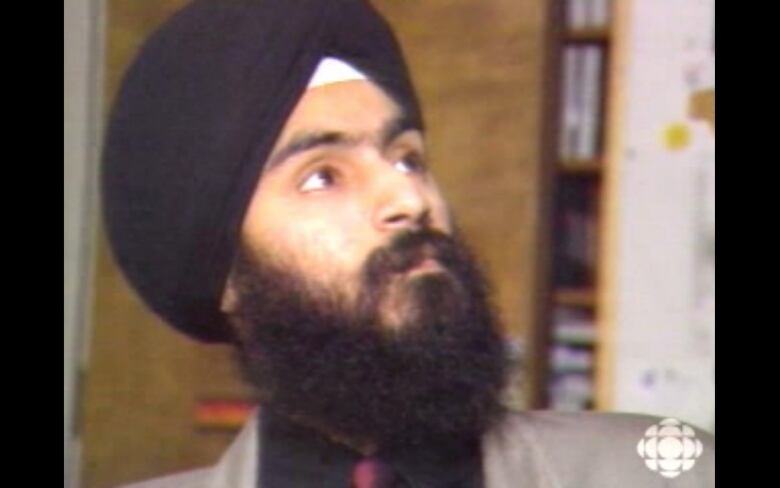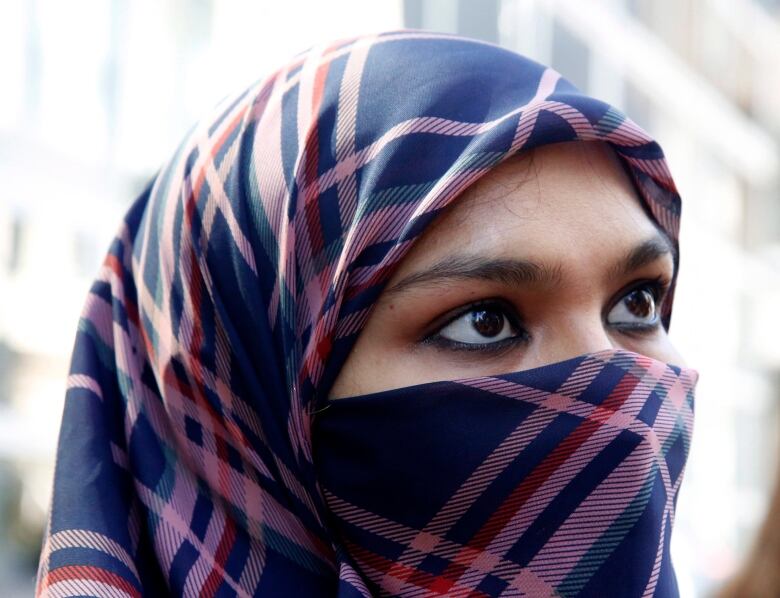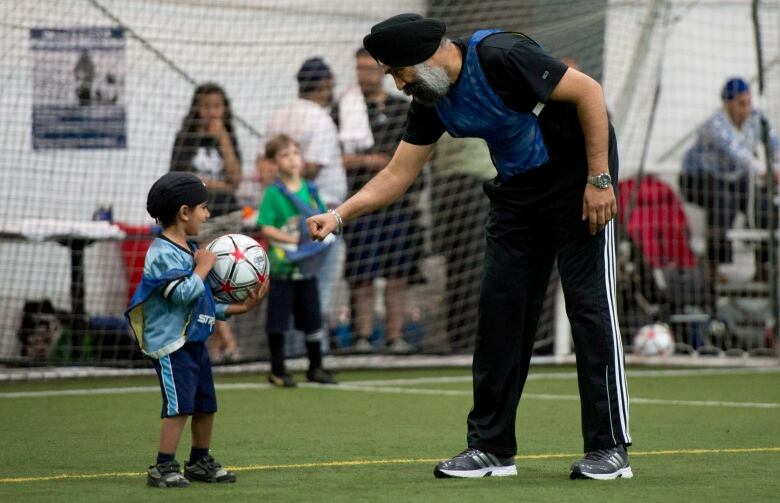Niqab debate recalls RCMP turban furor of the '90s
At one time, Reform Party policy chief Stephen Harper wanted to ban turbans in the RCMP

What was allegedly at stake in that debate in the 1990s was the very fabric of the nation, and the sanctity and perhaps survival of an important historic symbol of the country the Stetson of the Royal Canadian Mounted Police.
- Poll ordered by Harper found strong support for niqab ban
- 'What is a niqab?' Canada's top Google query during debate
- Niqabs should be allowed during citizenship oath, Mulcair says
Baltej Singh Dhillon, a young practising Sikh, wanted to become a Mountie. But his application to the force led to a kind of turban turmoil and an eventual intervention in Parliament by the Progressive Conservative government of the day.
The debate was featured on newscasts and dominated the public conversation. Political parties took positions on it, including the Reform Party, which deemed allowing the right to wear a turban unnecessary, and went so far as to pass a resolution at its 1989 convention banning such religious attire for the RCMP. At the time, Stephen Harper was a defeated Reform candidate and the party's policy chief.
Dhillon is now a staff sergeant in the RCMP. The force refused to allow him to speak to CBC News about the turban debate. But in a video story produced by Telus Optik in B.C. and posted online, Dhillon recalled the tone of the debate.
"It was vicious. It was angry. It was emotional. It had all the elements of racism in there. It was a disappointment is what it was," he said in the video.
"The fear was that we would lose the symbols that defined Canadians and defined our culture and defined who we were and our branding with the rest of the world."
"And that was the greatest irony: That on one hand, we need to protect our symbols, and in the same breath, we need you to not protect your faith or your religion or your roots."
Change came in 2011

"Both the turban and the niqab are seen as religious requirements. So the link is obvious in my mind," says Natasha Bakht, law professor at the University of Ottawa, who studies the intersection of the Muslim face-covering and the law.
"We went through a situation where we were not used to seeing Sikh men. We were not usedto seeing them on the streets,we were not used to seeing them in positions of authority, and usually when you're not used to seeing something, you are uncomfortable with it, or you are fearful of it. But we got past that."
Bakht believes discomfort is at the root of the debate about the niqab, too. She can find no legal argument to support its banishment, only an assessment the niqab is not necessary for Muslims and therefore, the right to wear it is not in need of protection.
Bakht says that position amounts to interference in the practice of faith. It supposes there is one correct, and state-sanctioned, interpretation of whether Muslim women ought to cover their faces.
But if one does imagine the assault on Canadian valuesallegedly posed by the niqab is a justifiable reason for restricting the wearing of the niqab when swearing the oath of citizenship, Bakht points out that has only recently been deemed a problem.
Until Jason Kenneyannounced the changes in 2011 when he was immigration minister, women were allowed to wear the niqab at those ceremonies, Bakht notes. It was Kenney's move that was the change.
Zunera Ishaq, an Ontario woman, challenged the ban in court and has had two rulings in her favour. The government has announced it will appeal the most recent ruling to the Supreme Courtand is seeking a stay to prevent the niqab from being worn at citizenship ceremonies in the meantime.
Charter protection
Opponents of the turban thought it unnecessary, or, at least, deemed the religion it represented not worthy of the protection the charter affords.

They were using those religious symbols as a way to divide the communities, to divide our Canadian society and to challenge our values of tolerance," Tut said.
"It's great fodder for folks who want to use wedge politics to advance their agenda. But who are we to go and say someone wants to go practise their religion a certain way is wrong?"
Tut is Sikh, but does not wear a turban. He said he recently engaged in an entire debate aboutSikhismand the turban without anyone knowing he was an adherent of the faith.
That's not the case for those who wear forturban, or for Muslim women who wear theniqab.
"You're constantly reminded of who you are," Tut said. "You're always on guard, in a way. You understand when you are out and about, you're not only representing yourself, you're representing your community."
But Tut saidthe debates about the turban and now the niqab should not dissuade Canadians from pride in their acceptance of newcomers, their faiths and traditions.
"You have to give Canadians a lot of credit," he said. "We're a tolerant society. And I think a lot of folks will see through this misinformation."












_(720p).jpg)


 OFFICIAL HD MUSIC VIDEO.jpg)
.jpg)



























































































